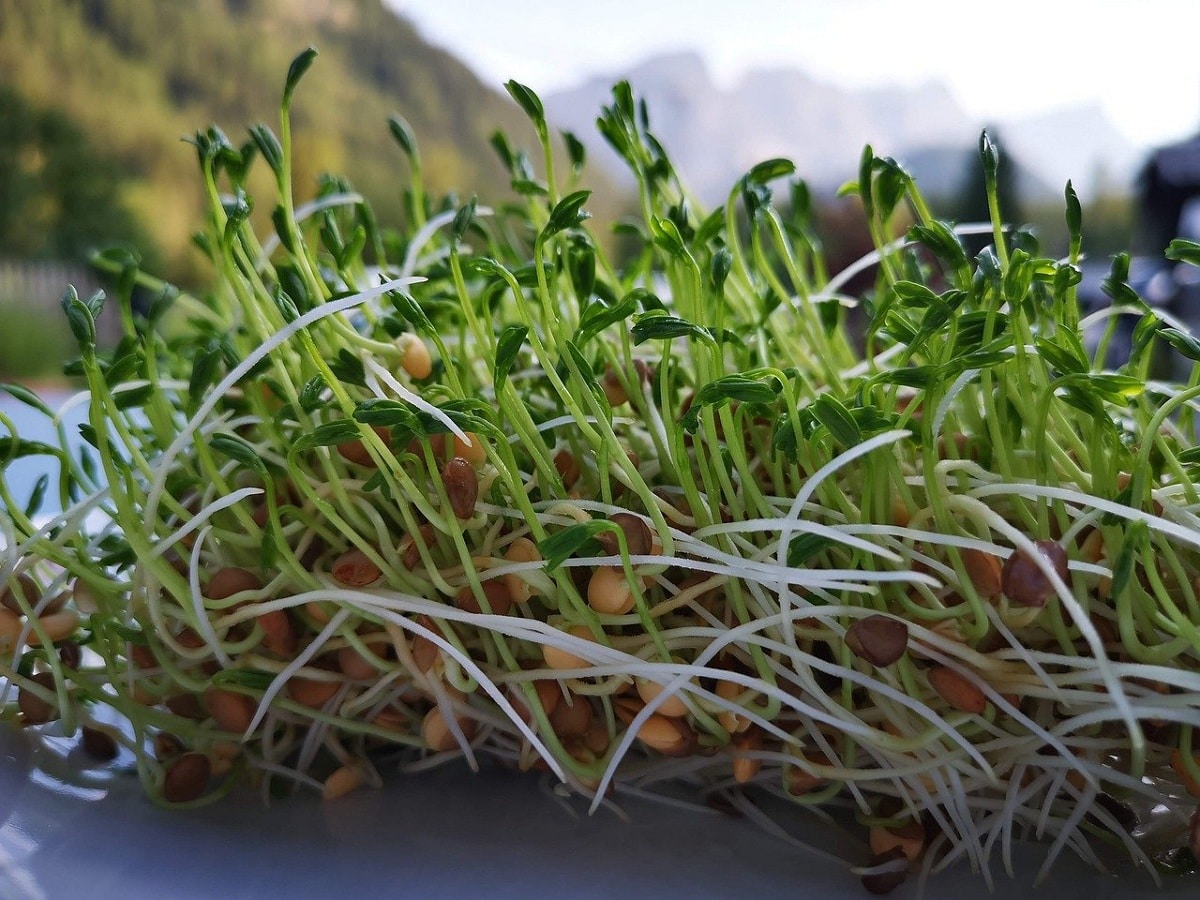
Lentils, the scientific name Lens culinaris, is an annual legume that is widely consumed in Asia and North Africa, as well as in some parts of Europe and Latin America. It is a very resistant plant, known for its excellent nutritional properties. Lentils are rich in carbohydrates and vegetable proteins, and they are very low in fat, they are a complete and healthy food. Surely as a child you were told by the school to sow the potted lentil plant.
Therefore, we are going to dedicate this article to tell you what the care of the potted lentil plant is and what you should take into account.
When and how to sow the potted lentil plant

The sowing time of lentils depends on the type of climate of the area where it is being planted. If you live in an area with a warm climate and mild wintersYou can plant it in autumn, and if the climate in your area is colder, planting after frost is recommended.
Another option is to plant the lentils in seedbeds or indoor pots about two weeks before the last frost, and once they have passed, transplant them to their final location outdoors.
Since these types of beans can be sown directly in the open air, we will gradually understand how to grow lentils:
- Prepare the soil. Lentils need soil rich in organic matter, so you should enrich it with some type of organic compost, such as compost, vermicompost, or bokashi. In addition, plants require good soil drainage and a pH value between 5,5 and 9.
- Prepare lentil seeds and soak overnight before planting to promote germination. You can also germinate them among damp cotton indoors and then transplant them.
- Sow the seeds to a depth of about 3 times the size of the seeds and leave a space of about 15 cm between them. You can cover them with newspaper or another type of covering to protect them until they sprout.
- Water after sowing, but always avoid the accumulation of water in the soil.
Potted lentil plant care

Once you have grown the potted lentil plant, we recommend that you follow these tips on basic lentil care so that the plants are successful and can be enjoyed in your dishes.
Lentils are a plant that can withstand a certain degree of cold, but does not tolerate frost. Always grow them when they are not affected by temperatures around 0ºC. In fact, its optimum temperature is between 6º and 28º. Plants need a lot of sunlight, so plant them in one of the sunniest areas of the garden or field.
We have already said that this legume needs a soil rich in organic matter, but it is worth noting the importance of good drainage. Lentils can easily rot due to excessive humidity, although they require slightly moist soil, mixing them can be very harmful.
The potted lentil plant appreciates a certain degree of moisture in the soil. However, it cannot withstand a long dry spell, so watering is recommended when signs of drying begin to appear. When the pods begin to dry out, it is advisable to water them at intervals or even stop watering.
This is not necessary, but it is recommended to provide a trellis or some other low structure to place the plants. On the contrary, plants will spread over the ground, requiring more space and making them more vulnerable to pests and diseases.
Such plants like to be in areas with air ducts, just as it is best to prevent the plants from getting too close to each other. Because it is susceptible to moisture, if a lentil is created in a confined space or in an area where air cannot circulate normally, it is susceptible to fungal attack.
When and how are they harvested

Depending on the temperature, climate, and specific types of lentils, It should be able to be harvested between 80 and 110 days after sowing.
It should be harvested when the plant begins to dry out, at this time the stem should be cut and hung upside down to dry completely, preferably in a paper or cloth bag. After the plant is dry, shake it to let the seeds fall out. You can use the dried plant residue to make organic compost, such as compost or humus.
Sowing in agriculture
The cultivation requires good planting, well-drained soil, uniform plots, and the previous stubble is well distributed without leaving a trace. Avoid a lot of standing water. The sowing time is from mid-June to the end of July, and the distance between plants and rows is about 15 cm. The planting depth of large seeds is about 5 cm. Small seeds should be sown more superficially.
Regarding density, the size of the seeds and the size of the variety must be considered, because it is difficult to obtain 200 plants per square meter, which is achieved with 150 kg of seeds per hectare, calibrated from 5 to 6 mm. Average planting density for early lentils is typically 200-220 ptas / m2, while for lentils with longer cycles, the recommended density is 150-180 ptas / m2.
In the last three years, direct seeding has obtained very interesting results. The sowing must have a distance between lines of 17,5 to 21 centimeters, with localized fertilization to avoid damaging the seed.
With direct sowing, the problem of harvesting was solved, since this was made difficult by the clods of earth that remained on the surface with conventional sowing.
It is recommended to treat the seed with broad spectrum fungicides and inoculate the seed with specific strains.
As you can see, lentils are quite easy to grow both in pot and in the field and have great benefits for the body. It should be included in almost all types of diets. I hope that with this information you can learn more about the care of the potted lentil plant.